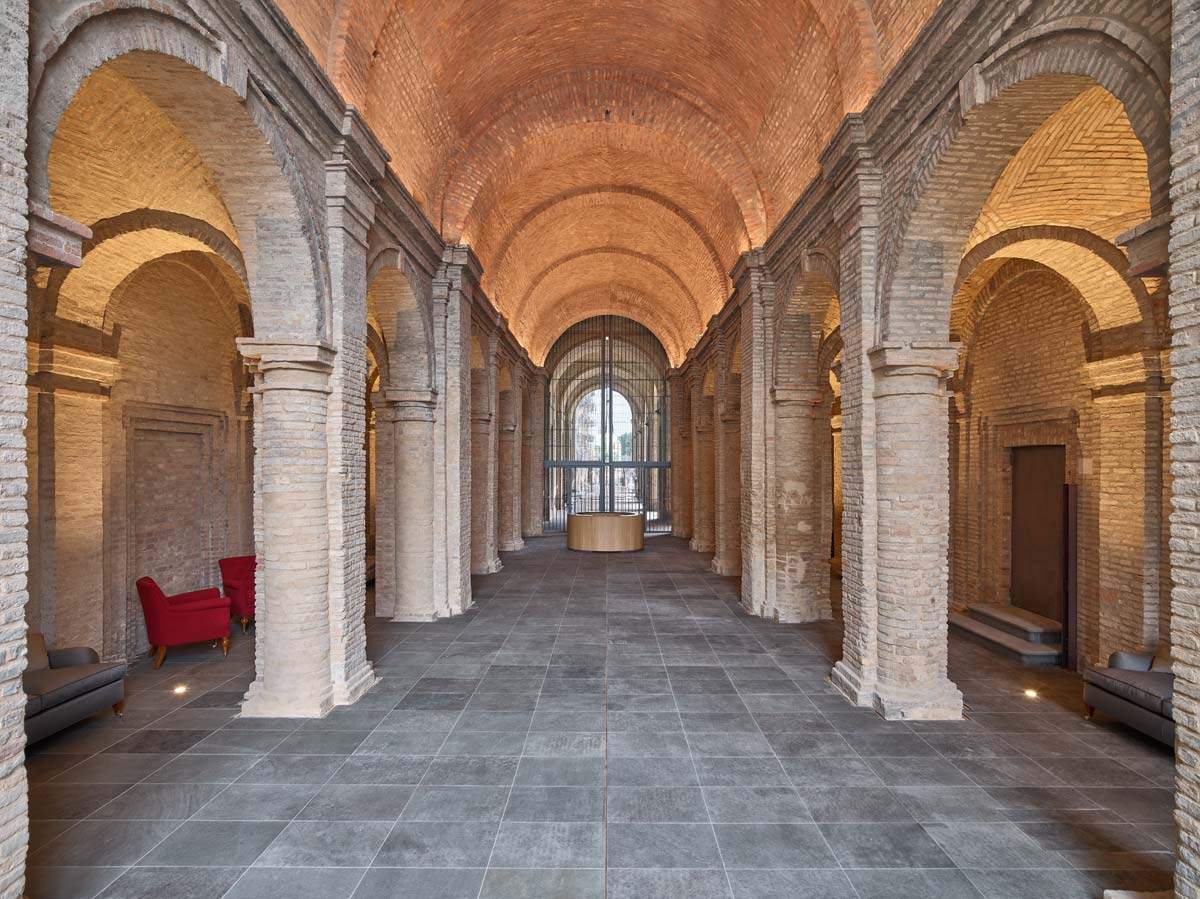The Palatina Library’s Paciaudi Room was inaugurated yesterday in the Complex of the Pilotta in Parma: it is a monumental multipurpose room aimed at making the Palatina Library a functional space in step with the times and an autonomous entrance for its direct and more suitable use. Presented to the public as part of the 8th edition of I like Parma. Un patrimonio da vivere promoted on the occasion of the “FAI Fall Days,” the Paciaudi Room (named after the learned Theatine father Paolo Maria Paciaudi, the institution’s first librarian) constitutes the beating heart of the Palatina Library, one of the oldest institutions in the Complex with a priceless book and documentary heritage as well as the custodian of a unique collection of drawings and prints.
The public and scholars will thus be able to access the Palatina Library through an independent entrance, the result of the segmentation of a 17th-century covered passageway in a state of serious deterioration and neglect, equipped with large windows designed by architect Guido Canali that border the Paciaudi Room. The new entrance thus allows a more suitable separation between the study area and the monumental area, avoiding intermingling between service users and the visitor area.
“What we are presenting today is a significant redevelopment,” says Simone Verde, Director of the Complesso Monumentale della Pilotta, “aimed at restoring dignity to one of the oldest national institutes of collecting and culture as well as to the Parma community. A further step forward in the construction of the image of the New Pilotta, which is increasingly aimed at a contemporary and up-to-date enjoyment of cultural heritage.”


The volume that was the subject of the intervention, designed at the time by Baroque architect Carlo Rainaldi and inspired by the triumphal passage with three naves leading to the interior of Palazzo Farnese in Rome, becomes a multifunctional room at the service of the user, with the architectural appearance of a secular basilica, aimed at hosting reception services as well as conferences pertinent to the scientific purposes of the institution. The space has also been renovated thanks to the donation by the Nicola Bulgari Foundation of sofas reserved for the public.
The intervention, moreover, will allow the Library, once all its staff is back in force, to offer its users longer opening hours than those of the museum as well as to gain greater visibility thanks to the direct entrance from the ground floor.
Finally, the idea of a separate entrance between the Library and the monumental part of the Complex re-proposes an intent, never realized, hypothesized by former Parma Mayor Giovanni Mariotti in 1894, as evidenced by a letter he wrote to the public administration; even then, the goal was to transform such spaces into access to the Library as well as to intervene in urban decorum and security. “We believe ourselves in duty bound to propose,” Mariotti wrote, “that, while the passage on the Scalone remains free for the employees of the Palatina and the Archives, a new staircase be opened for public access to these two Institutes. The thing would not succeed, neither difficult nor very expensive. [...] In part of that room, on the ground floor, (demolish a small staircase and some thin walls, of recent and very bad construction) the great atrium of the Farnese Palace would reopen in its majestic architecture. The central hallway of the atrium had remained open to the public even after the construction of those ungainly walls; the western portico, also closed in the last century, was reopened a few months ago by the museum management; now it would be a matter of completing the beautiful work by reopening the eastern portico as well. From this portico there would be a decent new entrance to the library and Archives.”
 |
| Parma, Palatina Library gets new entrance, Paciaudi Room |
Warning: the translation into English of the original Italian article was created using automatic tools. We undertake to review all articles, but we do not guarantee the total absence of inaccuracies in the translation due to the program. You can find the original by clicking on the ITA button. If you find any mistake,please contact us.